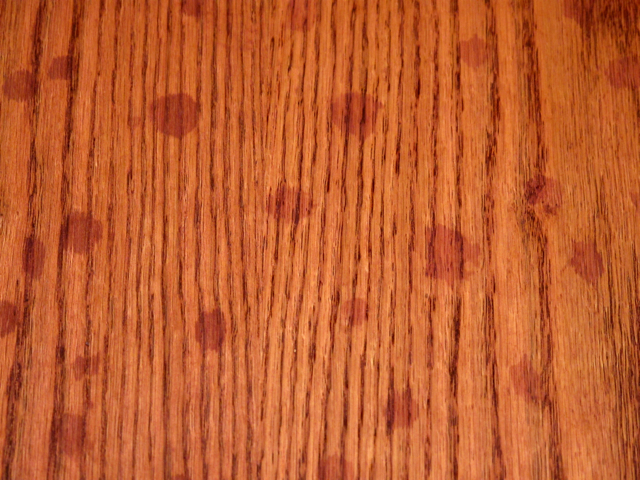We may receive a commission when you use our affiliate links. However, this does not impact our recommendations.

Every spot of sprinkle stained darker because the grain had been raised. More of the stain had been retained.
I learned this lesson the hard way. Don’t transport unfinished wood in the open bed of a pick-up truck if there’s any chance of rain.
A local cabinet shop had made some oak display stands, and I was hired to finish them. It was sprinkling when I picked up the stands in my pick-up. I took them back to my shop and immediately began applying a stain (the cabinet shop had already sanded them). Every place where a drop of water had landed on the oak stained darker. The explanation, of course, was that the water had raised the grain making that area rough so more of the stain was retained.
Easy to explain after the fact, but I hadn’t realized that this was going to happen, and it caused me a lot of work. I had to resand the wood to below the darker stain spots, then restain.
Realizing that this spotting was going to happen when I applied the stain wouldn’t have saved me any work, however, because I would still have had to sand the wood to below the raised grain to prevent the spotting. The solution is to avoid this problem in the first place by covering the wood so it doesn’t come into any contact with water.
– Bob Flexner
Here are some supplies and tools we find essential in our everyday work around the shop. We may receive a commission from sales referred by our links; however, we have carefully selected these products for their usefulness and quality.









Would it have work to wipe the wood with a damp cloth, then sand lightly and stain? Would that have eased the spotting without making you sand so far down? or would that rain (no pun intended) other issues?